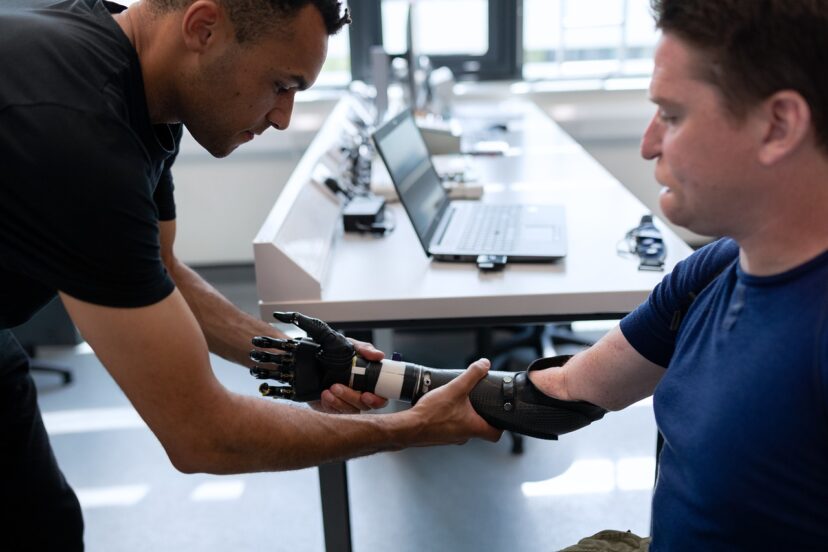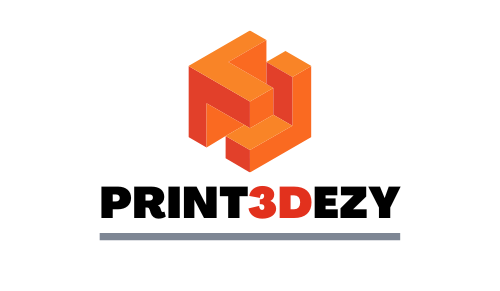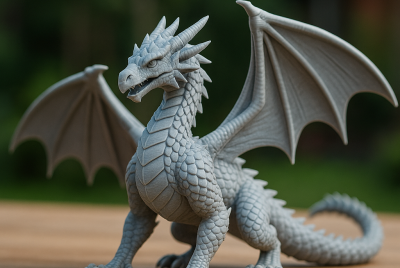3D Printing in Medicine And Healthcare: Revolutionizing The Field
Although 3D printing has been causing a stir in many different industries, the medical and healthcare sectors are where it is really having an impact. This cutting-edge technology is altering how we approach surgeries, treatments, and even the creation of medical equipment. Imagine creating or manufacturing a prosthetics layer by layer and being able to customize it according to the patient’s requirements. That’s just revolutionary! Yes, it is genuine and taking place right now. Let’s talk about 3d printing in medicine and healthcare plus how they change the game.
What is 3D Printing in Medicine and Healthcare?
In simple words, 3D printing involves creating items by adding layers of material based on a computer design. Now, in the world of medicine, this means producing medical gadgets, implants, and even sections of the human body (yes, really!) that are designed to match a patient’s unique requirements. Healthcare may now be personalized in ways we never imagined possible. All thanks to 3D printing, as opposed to mass-producing goods that might or might not fit. Imagine having a customized answer for your health issues—it’s truly remarkable!
How 3D Printing Works in Medicine
A digital model of whatever it is you wish to produce is the first step in the process. These models are typically based on patient body scans such as MRI or CT pictures. The item is then constructed layer by layer using a 3D printer, occasionally using materials like cells or biocompatible polymers. 3D printing’s accuracy and versatility come from this layer-by-layer method, which makes it possible to create remarkably exact replicas of organs, bones, and other body parts. It’s similar to assembling a puzzle, only that the components are science and technology.
Personalized Healthcare: The Game Changer
Customization is one of the most exciting features of 3D printing in the medical field. 3D printing enables medical professionals to create surgical tools, medicinal devices, and prosthetic limbs that are exactly suited to the patient. For instance, 3D printing produces custom prosthetics that are suited to a person’s unique body size and shape rather than generic ones that might not fit properly or cause discomfort. It makes a big difference, much as when you go from a one-size-fits-all T-shirt to one that fits precisely.
Prosthetics: The Future Is Now
Let’s go over prosthetics. Ordinary prosthetic limbs are not always the best fit for the user, can be costly, and can cause discomfort. With 3D printing, however, the game has changed. Custom-designed prosthetics are more affordable, accessible, and, most importantly, they’re a better fit. In some circumstances, 3D printing has even made prosthetics affordable to people in low-income areas where high-end, mass-produced prosthetics were out of reach. It’s all about increasing quality of life, one personalized limb at a time.

Surgical Planning and Simulations
Surgery is always risky, right? But what if surgeons could practice before the actual operation? That’s where 3D printing comes in. Surgeons can now print models of a patient’s specific anatomy, which helps them prepare better for complex surgeries. For instance, if a patient has a tumor or a heart defect, doctors can use a 3D model of the area to plan the best approach before making an incision. It’s like having a practice round before the big game—better preparation leads to better results.
3D Bioprinting: The Cutting-Edge Frontier
So, you’ve heard of 3D printing plastic and metal, but how about printing with human cells? That’s where bioprinting comes in, and it’s one of the most exciting frontiers in healthcare. Bioprinting involves printing with living cells to create tissue or even organs. While we’re not printing entire organs just yet, scientists have already successfully created small tissues, such as skin and cartilage, using 3D printers. This could mean the end of long organ transplant waiting lists in the future—how incredible is that?
Creating Custom Implants and Medical Devices
For years, medical implants were made to fit an average shape and size, but of course, not everyone is “average.” Thanks to 3D printing, implants can now be custom-made to match a patient’s exact anatomy. This is especially important for things like joint replacements or bone scaffolds, where a perfect fit means less pain and faster recovery. It’s almost like getting a pair of shoes that fit exactly right—no more pinching or discomfort, just smooth healing.
Tissue Engineering and Regenerative Medicine
Imagine being able to replace damaged tissues or organs with brand new ones made from your own cells. That’s the dream of tissue engineering, and 3D printing is making it more of a reality every day. By printing tissue structures that mimic the body’s natural scaffolding, researchers are encouraging cells to grow and form new tissues. While we’re not quite printing full-blown organs yet, small tissues like skin and cartilage are already being used in medical treatments, and that’s just the beginning.
3D Printing for Drug Delivery
3D printing isn’t just for creating physical objects—it’s also a game-changer in drug delivery. By printing drugs into custom shapes or layers, scientists can create pills that release medication at specific times or in specific amounts. This helps improve the effectiveness of treatment by ensuring the right dosage reaches the right place at the right time. It’s like having a pill that works exactly how and when you need it—how cool is that?
Improved Medical Training with 3D Models
Medical students and professionals need to practice their skills, but they don’t always have the luxury of practicing on real patients. That’s where 3D-printed models come in handy. These models allow students to practice complex procedures in a safe, controlled environment. It’s like having a rehearsal before the big performance—by practicing with 3D models of organs or body parts, medical professionals are better prepared when it’s time to perform the real deal.
Products to Consider
Here are some related products and technologies that are making an impact in the world of 3D printing for healthcare:
- 3D Printers for Medical Applications
- FLASHFORGE Adventurer 5M 3D Printer – A high-precision 3D printer ideal for creating detailed medical models and prototypes.
- Official Creality Ender 3 3D Printer – Perfect for printing medical devices and prosthetics with high-quality materials.
- FLASHFORGE Adventurer 5M 3D Printer – A high-precision 3D printer ideal for creating detailed medical models and prototypes.
- Biocompatible 3D Printing Materials
- Medical Grade Resin – A material designed for medical applications, offering biocompatibility and ease of use.
- Stainless Steel Filament – A stainless steel filament that is suitable for creating durable, medical-grade components like surgical tools.
- Medical Grade Resin – A material designed for medical applications, offering biocompatibility and ease of use.
These products are leading the way in transforming healthcare through 3D printing, offering everything from custom prosthetics to bioprinting tools for tissue engineering and medical education.
Affordable Healthcare Solutions for All
Let’s face it, healthcare can be expensive. But 3D printing could be the solution to that problem. Because 3D printers can create custom medical devices at a fraction of the cost of traditional manufacturing methods, this technology opens up affordable healthcare solutions to more people, especially in developing countries. This means that medical devices, implants, and prosthetics could become more accessible to those who need them most.
Improving Wound Healing with 3D-Printed Skin
Wound healing can take a long time, especially for serious injuries like burns. But with 3D-printed skin, we might be able to speed up that process. Using bioinks made of living cells, scientists are printing skin grafts to cover wounds, encouraging faster healing. This could change the way we treat burn victims or anyone who suffers from severe injuries, offering a quicker, more effective solution.

Ethical and Regulatory Considerations
As with any new technology, there are ethical and regulatory concerns surrounding 3D printing in healthcare. For example, bioprinting human tissue or organs raises questions about safety, consent, and fairness in organ distribution. Additionally, customized medical devices and implants need to meet strict regulatory standards to ensure they’re safe for use. As 3D printing becomes more common in medicine, clear guidelines and ethical frameworks will need to be established to ensure everyone benefits from this technology.
The Role of 3D Printing in Cancer Research
Cancer is one of the toughest challenges in medicine, but 3D printing is helping researchers find new ways to treat it. With 3D models of tumors, doctors can test different treatments or medications before applying them to a patient. This reduces the trial-and-error process, speeding up research and improving the chances of success. It’s like testing your recipe before serving it to guests—better preparation means better outcomes.
3D Printing in Dental Care
Dentistry is another area where 3D printing is making waves. From dental implants to custom-made crowns and orthodontic aligners, 3D printing is improving the speed and precision of dental treatments. Dentists can now print a patient’s exact tooth mold in just a few hours, cutting down the time it takes to get a perfect fit. It’s like having a dentist who can give you a custom-fitted mouthguard in no time—no waiting around.
Scientific Research on 3D Printing in Medicine and Healthcare
Two significant reviews highlight the transformative role of 3D printing in healthcare. The article “Applications of 3D printing in medicine: A review” published on ScienceDirect delves into how 3D printing is revolutionizing personalized medicine through the creation of patient-specific medical models and custom drug tablets. Another comprehensive review, “Role of 3D printing in healthcare: A comprehensive review on treatment and training” by SAGE Journals, discusses the wide range of 3D printing applications in healthcare, focusing on its impact on medical treatment and education, while also exploring future potential and challenges. Both reviews underscore the critical role of 3D printing in reshaping healthcare practices.
Check this out:
Challenges and Limitations of 3D Printing in Medicine
While 3D printing in healthcare has huge potential, there are still a few hurdles to overcome. The technology can be expensive, and not all healthcare facilities can afford it. Plus, the materials used for 3D printing need to meet strict medical standards to ensure they’re safe for the human body. And while bioprinting is progressing, printing full organs is still a dream for the future. But, as technology evolves, these challenges are likely to be addressed.
The Future of 3D Printing in Medicine And Healthcare
Looking ahead, the future of 3D printing in healthcare is incredibly promising. In the coming years, we could see the printing of fully functional organs, personalized drug delivery systems, and healthcare solutions that are tailored to individual needs. The potential is limitless, and as the technology continues to improve, we can expect to see even more groundbreaking advancements in the field.
Conclusion
In a nutshell, 3D printing in medicine and healthcare is changing the face of healthcare. From customized implants and prosthetics to the exciting possibilities of bioprinting, this technology is making healthcare more personalized, accessible, and effective. While there are still challenges to work through, the future looks bright, and we can’t wait to see what’s next. The healthcare revolution is just beginning, and 3D printing is at the heart of it all.
FAQs
- What is 3D printing in medicine? It’s the process of creating medical devices, implants, and even body parts using a 3D printer. This allows for highly personalized healthcare solutions that fit a patient’s unique needs.
- How does 3D printing benefit healthcare? It makes healthcare more personalized, affordable, and accessible. Custom devices, prosthetics, and implants are made to fit patients perfectly, improving outcomes and comfort.
- What is bioprinting? Bioprinting is the use of 3D printing to create living tissues or organs by printing with human cells. It’s an exciting technology with the potential to revolutionize organ transplantation.
- How is 3D printing used in surgery? Surgeons use 3D-printed models of a patient’s body to practice complex procedures and plan surgeries more effectively, reducing risks and improving success rates.
- What are the challenges of 3D printing in healthcare? While it holds great promise, 3D printing in healthcare faces challenges like high costs, regulatory hurdles, and the need for more research, especially in bioprinting. But these challenges are being worked on as the technology evolves.




